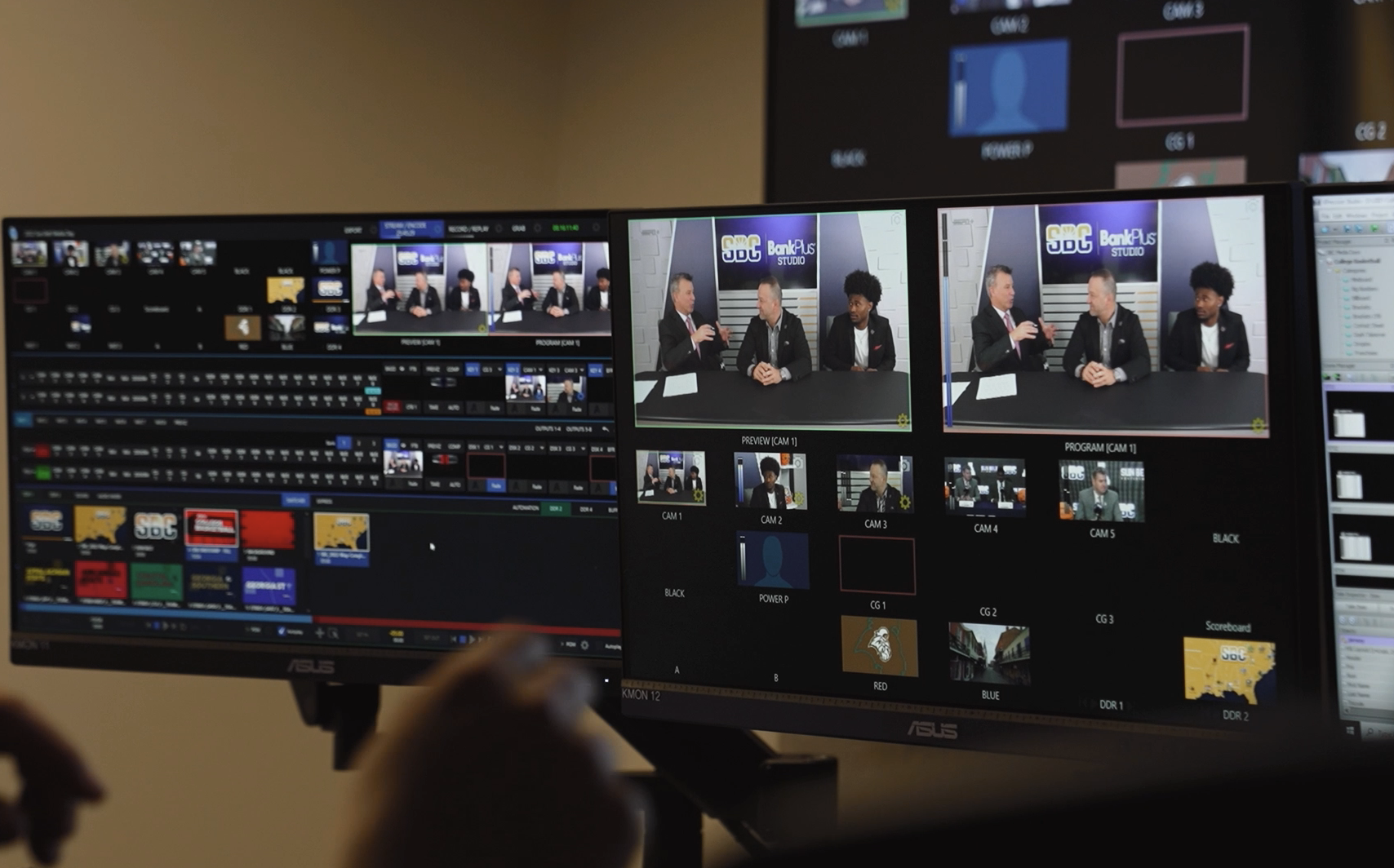Sports Media: The New Workflow Paradigm
A busier-than-usual schedule of events for sports in 2024 is a good problem to have, but it increases costs at a challenging business and technology moment for broadcasters and streamers.
The sports broadcasting industry is facing an enormous challenge: they are being asked to cover more events, produce more content in ever-more innovative and engaging ways and across more platforms at a time when corporate media budgets are under significant pressure. They’re squeezed by a number of factors but most intensely by broadcast’s unique and seemingly apocalyptic conundrum: sports-rights fees are steadily rising, even faster than inflation in the last few years, while at the same time broadcast and cable revenues from advertising and subscribers continue to decline.
As a result, sports media must discover ways to continue expanding but also find ways to do so as cost-effectively as possible. That imperative is even more stark when you look at 2024’s crowded line-up: special events including the Summer Olympics, the Paralympic Games, the Euro 2024 UEFA Euro Championship, and the Americas Cup, to name a few, along with annual major events such as Super Bowl, Daytona 500, World Series, All-Star games for the MLB, NBA, NHL and other leagues, and more.
Wider adoption of REMI and At-Home models
Like any team down by a few points at halftime, sports media companies have created counter strategies and tactics. Some of those were developed during — and as a result of — the Covid pandemic. These include so-called “REMI” and “at-home” models, in which many technical functions, from graphics to audio mixing, were being performed remotely, including literally from some technicians’ home basements and spare bedrooms, as separation and isolation became necessary for safety.
The same pandemic that had so disrupted the sports industry produced a number of workflow work-arounds that have since become entrenched operational models. As the pandemic receded, it became apparent that these same production methodologies could continue to help keep a lid on broadcasters’ costs, for instance by reducing travel time and related spend.
Fording The Stream
At the same time, broadcast sports, like much of the media industry, has been migrating to a streaming model. That in and of itself is a tectonic shift for a global, multi-billion-dollar business, and one being made while also navigating an uncertain business landscape.
Fortunately, there are some already very well-developed streaming solutions to help sports make this inflective transition more efficiently and effectively.
Making It All Work
For instance, when the Sun Belt Conference expanded to 14 member institutions across 10 states, it had to cover more championships in new locations and venues while also looking to reduce production costs associated with onsite trucks and third-party production crews. Centralizing their operation in New Orleans’ Superdome, from which it could produce 100+ live sporting events each year in REMI-type environment, was the first step. But the move would also require a complete rethinking of their signal infrastructure.

What made the move successful was the implementation of LiveU’s integrated solutions and the LiveU EcoSystem , to create a full remote-production workflow. It enabled them to provide full coverage of both their Golf Championship in Georgia and their Tennis Championships in Florida — simultaneously — all from their central control room in New Orleans. This decision eliminated the need to hire third-party production vendors, as well as to maintain full control of their brand consistency across all their broadcasts, leveraging the same production team and talent in-house, while generating additional revenue for the Conference.
Volleyball Expanded
With multiple beach tournaments taking place recently, the Volleyball World Federation sought a production solution that will allow them to expand their reach while replacing traditional costly transmission methods.
LiveU’s end-to-end contribution and distribution solution was deployed, supplying the feeds from the event locations to 28 distribution channels globally, including RAI, CBC, and ESPN. IP distribution was carried out via the LiveU Matrix cloud video service, using LRT™ (LiveU Reliable Transport), as well as the SRT open-source video-transport protocol on the output side. Seamless integration with a remote commentary solution was also part of the smooth IP workflow, allowing Volleyball World to enrich a record-breaking 16 million fans’ viewing experience while cost-effectively maintaining high quality and very low delay, from the camera to the viewer.

Football In The Cloud
In another case, Germany-based production company novel.media is the official on-air design and production partner the European League of Football (ELF). A LiveU EcoSystem with its IP-video solutions enabled novel.media to deploy a total of 12 multi-cam LU800 encoders, each unit transmitting up to four frame-synced camera signals in 1080p/50, with the feeds being received by LiveU cloud servers with minimal delay. This sets the stage for remote production in the AWS cloud. The open architecture of the LiveU EcoSystem allowed for the live signals to be integrated seamlessly with various cloud production tools, such as Vizrt solutions used for live mixing and real-time data graphics.

What all of these examples have in common are systems, devised and developed by LiveU, that both streamline the remote-production process and reduce media companies’ production costs, in many cases by as much as 70 percent. That’s because LiveU’s technology can eliminate the need for cabling, RF, and costly satellite and fiber connections, as well as mitigate the challenge of finding reliable internet for every event. LiveU’s portable, easy-to-use systems and built-in connectivity allow you to cover even more of the action at a fraction of the cost.
The LiveU EcoSystem is a set of IP-video solutions that are designed to add efficiency and shorten video production workflows across contribution, production and distribution. At its core is LRT (LiveU Reliable Transport), the video and audio delivery protocol developed by LiveU, enabling efficient video transport, low latency, and rock-solid reliability over wireless networks. The LRT protocol supports low-latency, high-resiliency video and audio transmission and was built from the ground up to accommodate the special properties of 4G/5G cellular, as well as more traditional wireless and wired networks. In particular, LRT is optimized to support the bonding of multiple IP connections. (LiveU is the inventor and patent holder of cellular bonding.) LRT powers hybrid and agile workflows, and on-prem and in-cloud deployments, as well as broadcast and digital workflows.

Optimized for bonded IP transmission, LiveU Reliable Transport ensures ultimate reliability and bandwidth consistency across the most challenging cellular networks. While other resilient streaming protocols use only one or two techniques, LRT applies multiple resiliency transmission techniques simultaneously such as Packet Ordering, Acknowledge & Resend, Dynamic Forward Error Corrections and Adaptive Bitrate Encoding.
LiveU has revolutionized live video contribution with a mission to transform the entire live video workflow and provide solutions that generate exceptional quality and production value, adapt to changing business needs, and enable customers to produce more engaging content for less effort, less time, and less cost. With as much sports as the world will see and hear this year, and with sports migrating steadily to a streaming paradigm, LiveU meets that trend with industry-leading next-generation technology tools.

